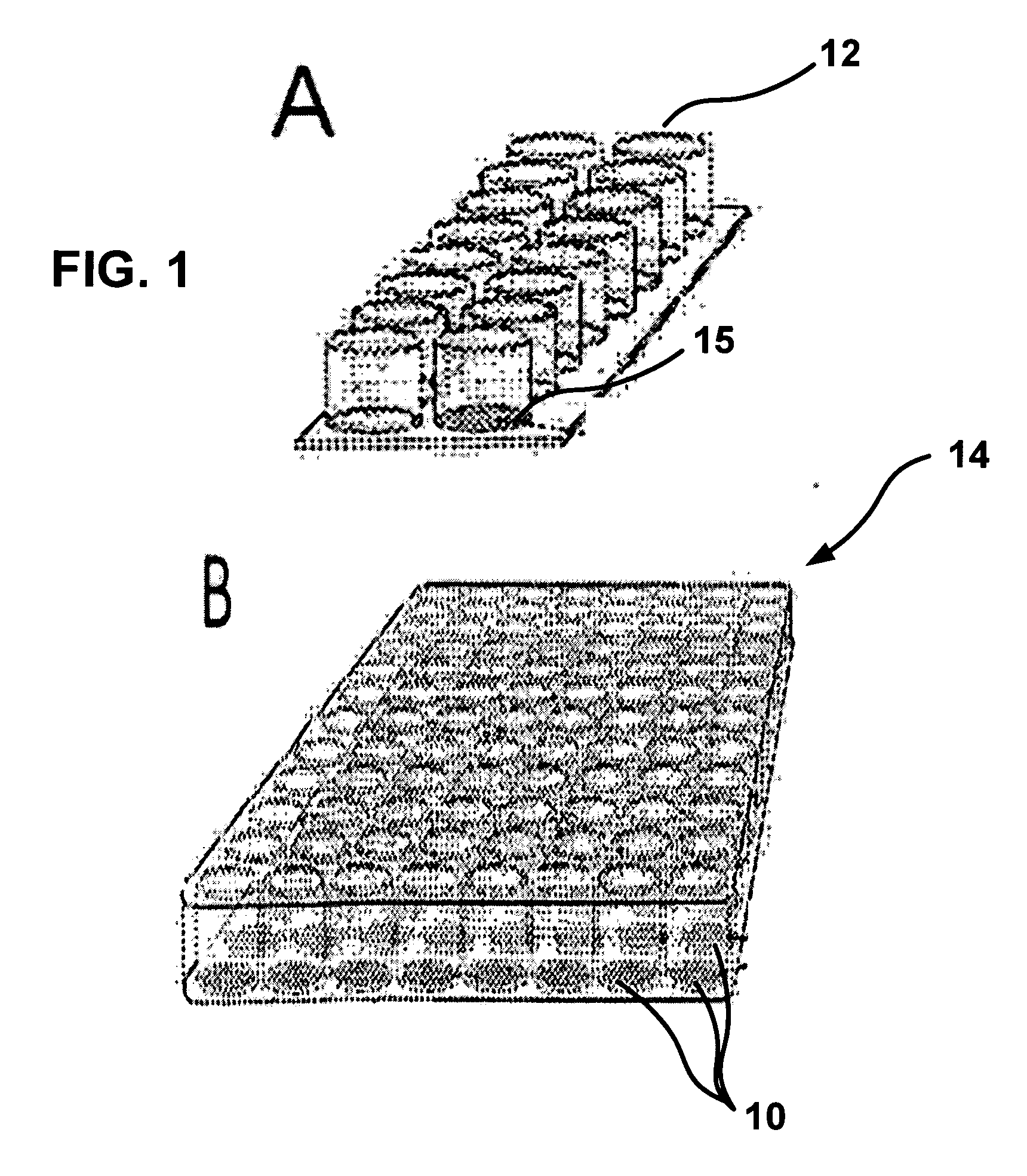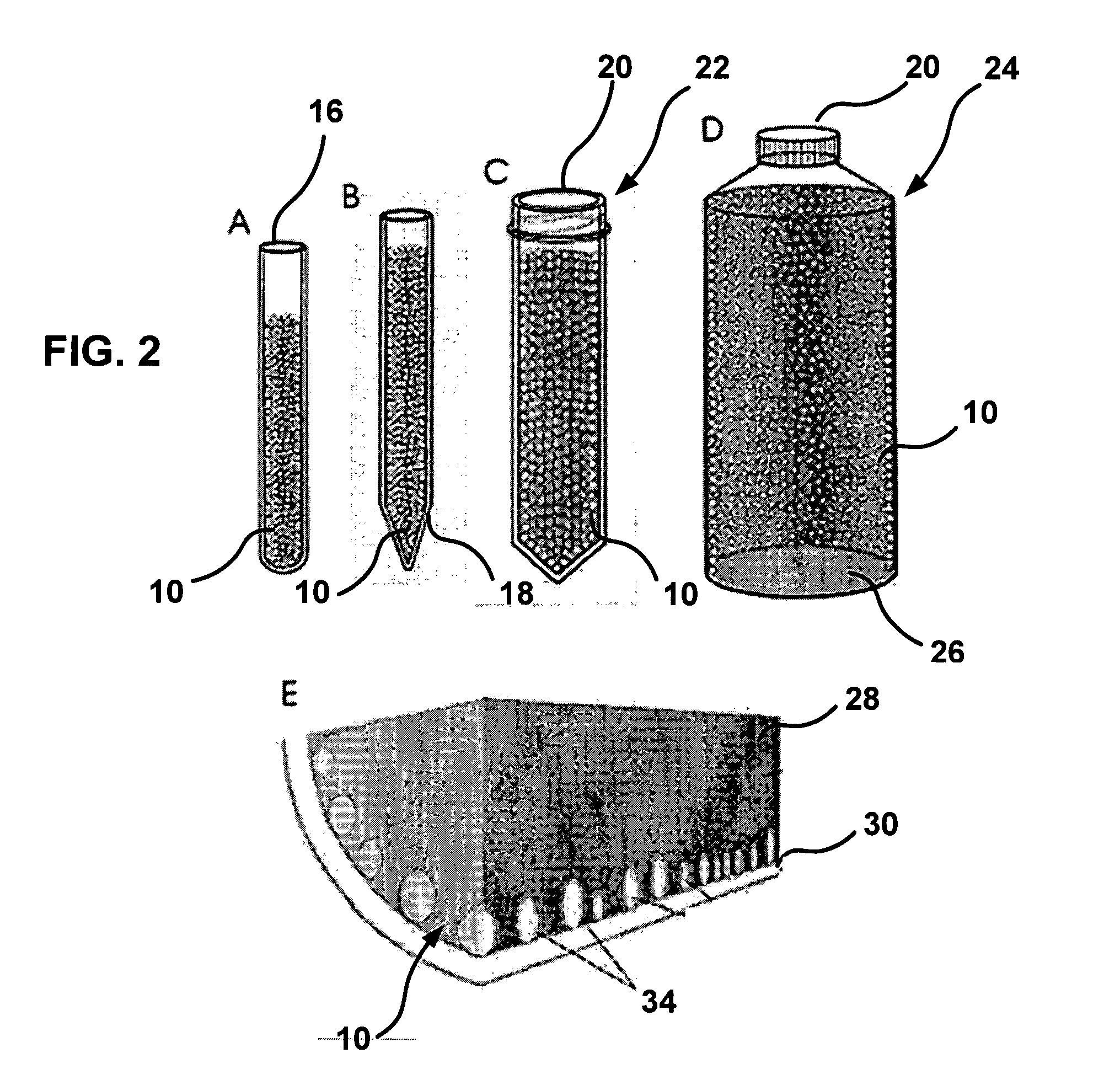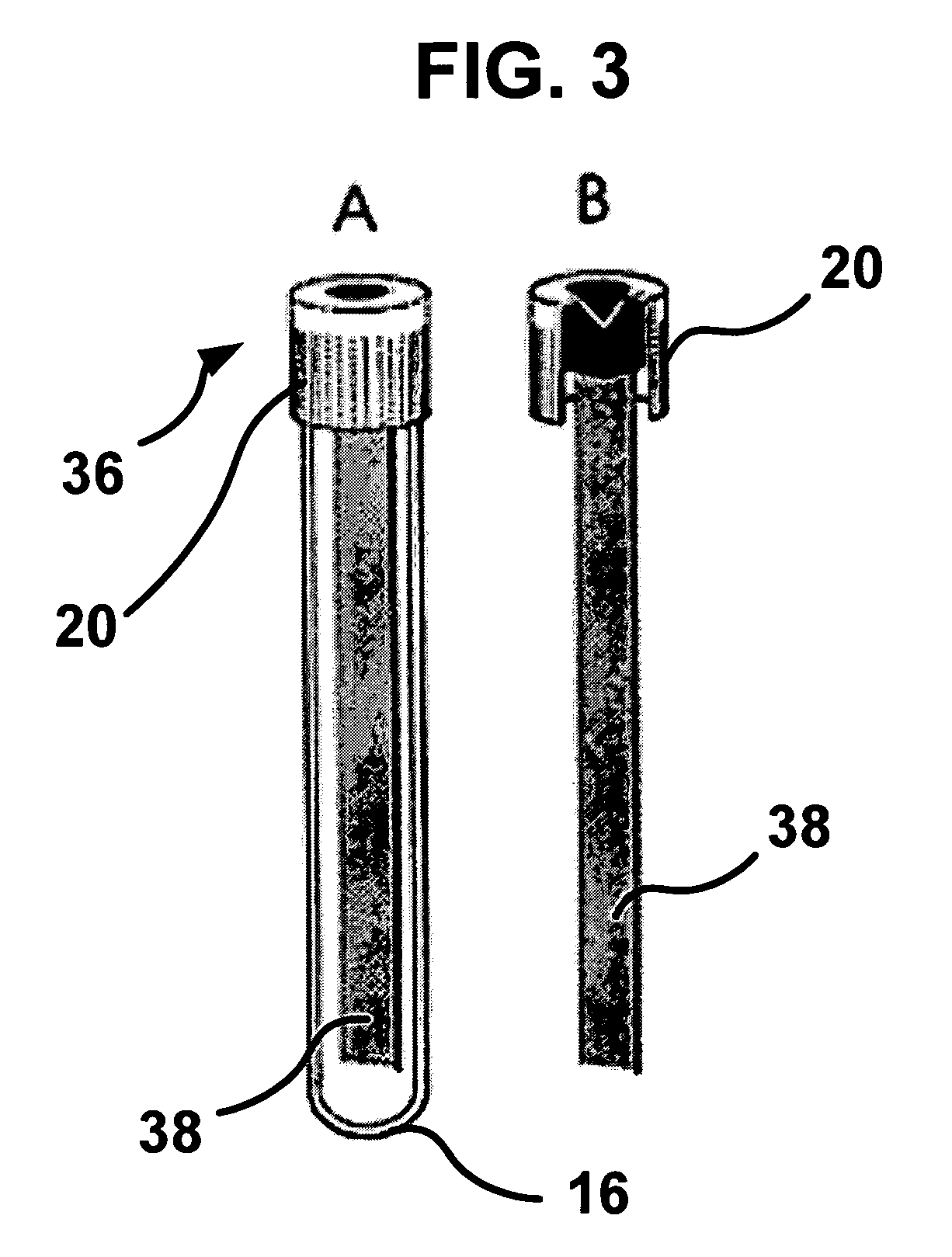Blood test prototypes and methods for the detection of circulating tumor and endothelial cells
a technology of endothelial cells and blood test prototypes, which is applied in the field of blood test prototypes and methods for the detection of circulating tumors and endothelial cells, can solve the problems of difficult purification of cells for analysis, negative prediction of cardiovascular diseases risk, and limited detection of exfoliated abnormal cells by routine cytopathology, so as to improve the anti-tumor immune response and dramatic utility in management
- Summary
- Abstract
- Description
- Claims
- Application Information
AI Technical Summary
Benefits of technology
Problems solved by technology
Method used
Image
Examples
example 1
CTC and CEC from Blood
[0072] Whole blood may be placed in a CAM blood collection unit, such as a blood collection tube (FIGS. 2 and 3). The tube may be incubated at about 37° C. and rotated to imitate blood flow so as to increase contact between cells and CAM. Blood may be collected in the presence of anticoagulants, i.e., Anticoagulant Citrate Dextrose solution USP (ACD, Baxter Healthcare Corporation, Deerfield, Ill.) plus 50 units of lithium heparin per mE, to prevent clotting in the CAM blood test unit. The sealed CAM-blood tube may be placed on a roller and rotated at 5-30 cycles per minute at about 37° C., and then incubated for 1-3 hours for cell attachment to occur.
example 2
Specificity and Sensitivity Control
[0073] Human tumor cell lines of different tumor origins may be chosen for use in performing specificity and sensitivity control experiments. For examples, the human colon tumor cell line SW-480, human gastric tumor cell line RF-48, several breast tumor cell lines, human malignant melanoma line LOX, and several ovarian tumor cell lines may be used. Tumor cell lines may be purchased from American Type Culture Collection (Manassas, Va.). All cell lines should be confirmed to be negative for Mycoplasma infection. The tumor cell lines should be examined for: (a) high affinity binding to CAM within one hour after plating; (b) high proliferation rate; and (c) the tumor cell lines should be readily and stably (100%) fluorescently labeled with red or green fluorescent dyes prior to use or transformed with an expression plasmid for green fluorescent protein (GFP) in order to be able to visualize the tumor cells directly at the end of the enrichment procedu...
example 3
Determination of Cell Viability in a CAM-Blood Filtration Unit v. Blood Collection Tube
[0076] Another problem is the cell viability of the blood samples, which may vary during transportation to the research laboratory. Increasing the time of storage may be expected to damage cells in the blood. To determine if tumor cells in the CAM blood unit can stay viable during shipping, 3,000 GFP-tumor cells were spiked into 3 mL of cord blood and control medium containing 15% human serum (Sigma). Each aliquot was stored at 4° C. for series of time (4, 6, 8, 12, 16, 24, 36 and 48 hours). Each aliquot was then captured by CAM and the percent recovery of GFP-tumor cells by CAM determined. For each time point, four duplicate experiments were performed, and percent recoveries determined. The results showed that CAM-captured tumor cells survived better than suspended cells in blood.
[0077] CAM-enriched cells may be counted by any means known to those of ordinary skill in the art, including microsc...
PUM
| Property | Measurement | Unit |
|---|---|---|
| diameter | aaaaa | aaaaa |
| time | aaaaa | aaaaa |
| time | aaaaa | aaaaa |
Abstract
Description
Claims
Application Information
 Login to View More
Login to View More - R&D
- Intellectual Property
- Life Sciences
- Materials
- Tech Scout
- Unparalleled Data Quality
- Higher Quality Content
- 60% Fewer Hallucinations
Browse by: Latest US Patents, China's latest patents, Technical Efficacy Thesaurus, Application Domain, Technology Topic, Popular Technical Reports.
© 2025 PatSnap. All rights reserved.Legal|Privacy policy|Modern Slavery Act Transparency Statement|Sitemap|About US| Contact US: help@patsnap.com



